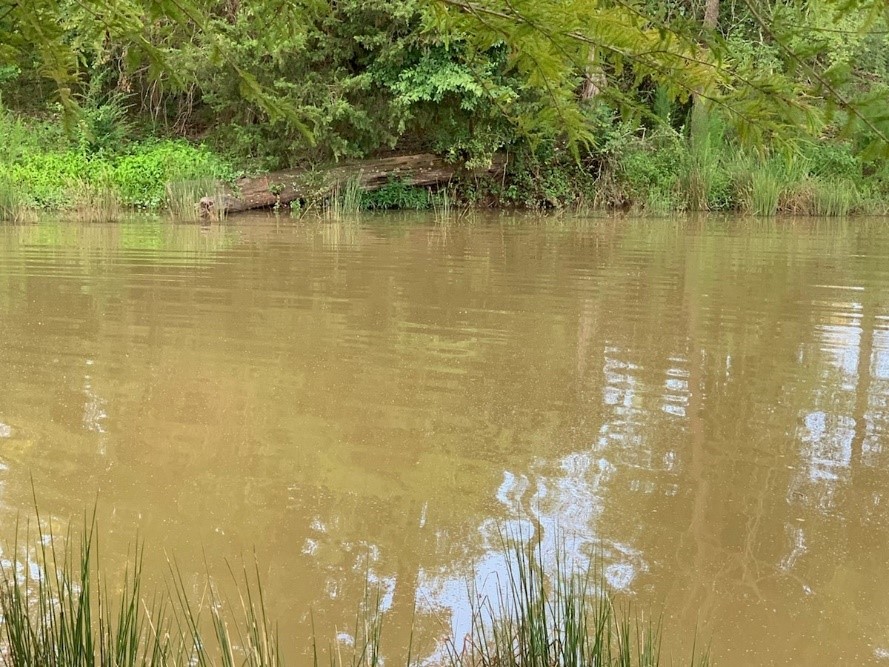Ponds with a muddy appearance can be an eyesore to some pond owners, which is why one of our most popular tests, behind the basic water chemistry analysis, is the water clearing treatment test. Truly muddy or turbid water loses its transparency due to suspended clay particles. This can be attributed to the presence of bottom dwelling fish like catfish, koi, and carp, along with aerators, livestock wading, erosion, or disturbances caused upstream in the water shed. If the cause for the disturbance of clay particles is not identified and resolved before a clearing treatment is applied, particles will be re-suspended or readily introduced, and treatments will only be temporary.

Additionally, lack of water clarity is not always the result of suspended clay and a crystal clear pond should not be your goal. Serious problems can arise with water clarity over 24” deep, like large aquatic vegetation infestations or inadequate food for fish growth. This is the reason fertilization treatments or pond dyes may be recommended for a pond. Maintaining water clarity between 18-24” limits the amount sunlight reaching the pond bottom, reducing the amount of aquatic plants that are able to establish. It should be noted that recently dug ponds will experience high clay turbidity rates for the first couple of years. Most of these ponds will clear on their own overtime.
A theme you will see throughout our lab is the recommendation of starting with a basic water quality analysis, and pond clearing is no exception. When thinking of pond clearing agents, most think of calcium carbonate, also known as agricultural lime. However, there are three other basic chemicals plus synthetic polymers that can be used to clear ponds with fish in them. If fish are not present, there are six possible treatments. Water chemistry within a pond influences interactions among all these chemicals and will help determine which chemicals will produce the best result and help determine how much chemical is necessary to achieve a clearing result. Two specific parameters we examine are alkalinity and hardness concentrations. The ratio between alkalinity and hardness and whether they are at sufficient concentrations, over 50 parts per million, is a good indicator on which chemicals will be the most successful at clearing a pond. Many clearing treatments will shift pH and could be dangerous to fish if sufficient buffering is not present, so anticipated changes in pH will also be considered when recommending a treatment.

Clearing treatment effects vary from pond to pond and may last 1 day or 5 years. Some ponds may never clear to desired standards regardless of treatment type or application, due to other soil and environmental influences.
Water samples in need of a basic analysis and clearing treatment test can be sent to The Texas A&M AgriLife Extension Service Aquatic Diagnostic Laboratory. Due to the amount of water needed for a clearing test, a minimum of 1.5 gallons is required. For more information and instructions on how to perform your own clearing test, please read Clearing Muddy Ponds.
